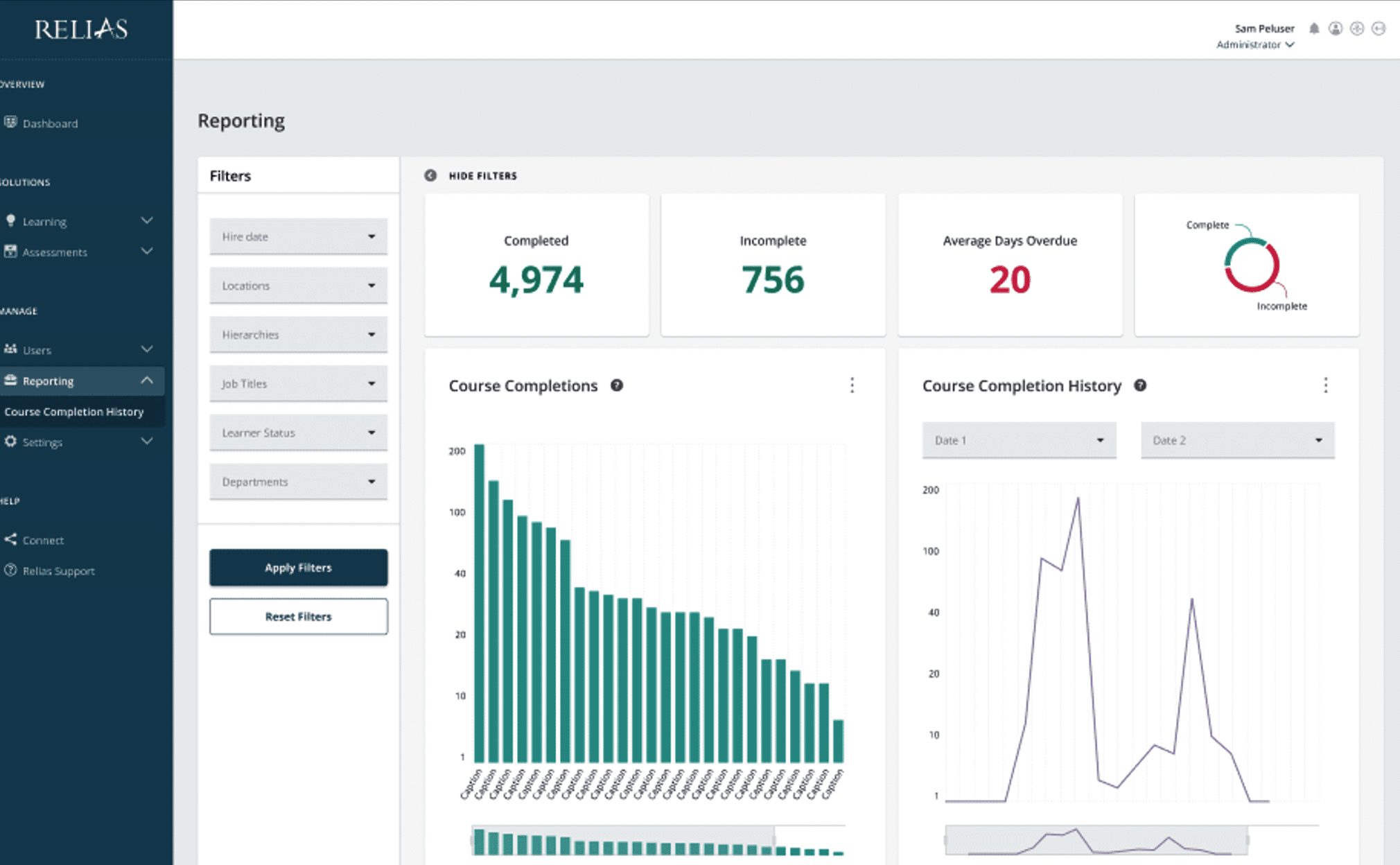
Director of User Experience, Relias
2020 - 2024
UX Design Leadership, Product Leadership, Product Strategy, Generative AI
The Role

Relias is on a mission to improve patient outcomes by enabling healthcare organizations and their workers with powerful educational content and management tools. Their reach at the time included 4.5 million healthcare professionals in 11,000 healthcare companies. I joined in 2020, excited by the chance to do work that would made a substantial difference in human lives, and the opportunity to focus on both healthcare and education.
As it turned out, we were essentially starting from scratch. In my time with Relias we grew the UX team from 2 to 14, and introduced an entirely new front end in the form of a new design system created by my team (not pictured here).
While at Relias, I reported to the Chief Product Officer. As a full member of the Product Leadership Team, I was able to incorporate UX priorities into all aspects of our product plans, and partner closely with Product VPs to make sure UX was fully aligned with their priorities.
Design System
A product of the scale and complexity of Relias cannot scale without reliable, repeatable design elements in the form of a cohesive design system. From the smallest elements (atoms) like color and font, to repeatable combinations for buttons and other small elements (molecules), a design system lets the team solve a problem once and then apply that solution much more cost-effectively wherever it may apply. In the case of Relias, the need for an updated interface was coupled with the need to re-engineer significant parts of the code, and also to re-imagine some of the process by which this work got done.
It was a daunting, but satisfying challenge.
Our design system was created to be viable if shown side-by-side with older Relias designs, so that it could be applied iteratively, as product areas (and their Agile teams) were ready for interface improvements, and rigorously detailed to be accessible to the WCAG 2.1 AA standard.
The UX Team worked closely with Engineering to make sure that each component was fine-tuned not just for its on-screen appeal, but also so that that it was up to a high standard of reliability and repeatability within the code base as well. We treated Engineers, Product Managers, and Marketing members as close collaborators, since each was impacted greatly by the long term decisions a design system formalized.
I'm unable to show the design system here at this time, as it has not yet been fully implemented.
Building a Team
When I started at Relias, there were two UX Designers. Within three years, we had sixteen. In order to serve the ambitious needs of the product organization, I created and implemented a plan in which the UX team would be split into two pods. One focused on B2C products, and one focused on B2B. Each benefitting from shared standards, tools, collaboration, and coordination with the overall UX team, but also able to adapt to their unique needs and unique collaborators. I also added dedicated UX Researchers to drive our design and product decisions with objective feedback and data.
Designers and researchers joined our team with varying skill sets and experience, but the collaborative model allowed each to rely on the cumulative abilities of the team as a whole. This allowed us to take on many multiple tasks simultaneously and also very large, complex tasks reliably. The success of our approach was measured in very high satisfaction scores from the Agile Teams we served. The quality of our work was measured in consistently high customer feedback in qualitative sessions and in surveys such as NPS regularly conducted by the company.
Relias was selected by G2 as their #1 “Top Product by G2 Score” in Summer 2023, Fall 2023, and Winter 2024 (consecutively) above iconic products from Microsoft, Adobe, Google, and others.